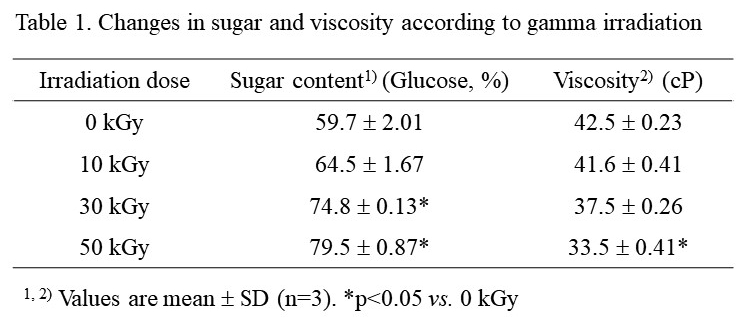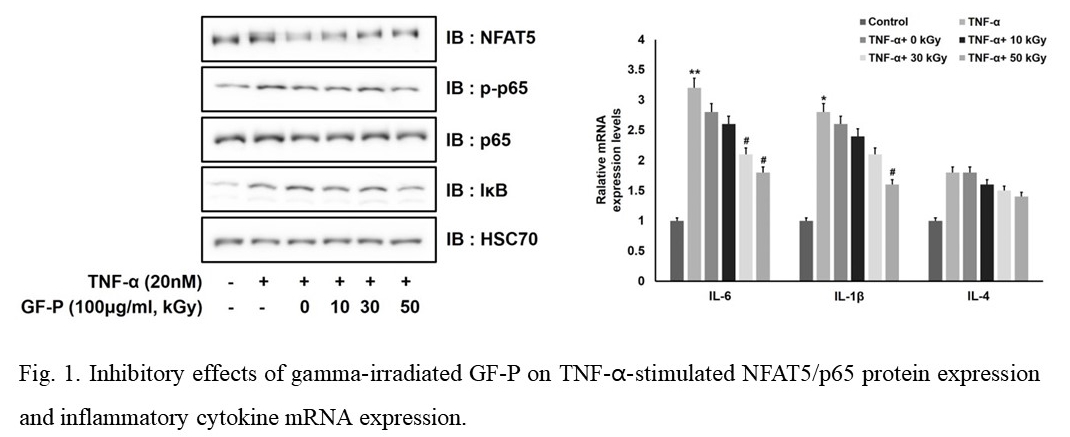
Gamma irradiation on the polysaccharide extracted from Gloiopeltis furcate is effective in inhibiting skin inflammation
Mi-Jin Kwon1, Ju-Woon Lee2,5, Young Ho Cho3, Kwan-Soo Kim4, Sang-Chul Kim5, Hao Chen6, Chengbi Cui7.
1R&D Center, PSA CO. LTD, Pusan, Korea; 2Headquarter, PSA CO. LTD, Pusan, Korea; 3Department of Pharmacy and Biotechnology, Konyang University, Daejeon, Korea; 4Headquarter, Greenpia Technology Inc, Yeoju, Korea; 5R&D Center, Greenpia Technology Inc, Yeoju, Korea; 6Headquarter, Sichuan Institute of Atomic Energy, Chengdu, P.R. China; 7Department of Food Science and Nutrition, Yanbian University, Yanji, P.R. China
OBJECTIVES
A sulfated polysaccharides extracted from Gloiopeltis furcata (GF-P) had the potential physiological functions that confer antioxidant, antitumor, hyperglycemic, and immune-enhancing properties. The effects of gamma irradiation (GI) on the physiologial activity of polysaccharides have been studied (Choi et al., 2011; Nagasawa et al., 2000), but its effects on GF-P have not yet been established.
EXPERIMENTAL RESULTS
When GF-P was irradiated with gamma ray, the values of chromaticity and UV spectrum changed according to the increase of the irradiation dose. In particular, as a structural chan-ge was induced at a dose higher than 30 kGy, the yellowness increased and the values of UV spectrum all increased between 200 and 400 nm.

Antioxidant effect of gamma-irradiated GF-P (gGF-P) was significantly higher than of non-irradiated GF-P (Souza et al., 2012), whereas the sulfate content in GF-P did not show any differences with the irradiation dose. We further investigated the anti-inflammatory effect of 50 kGy-gGF-P in HaCat keratinocytes exposed to TNF-α, since there has been not reported on the effect of gamma irradiated GF-P on skin inflammation. Gamma irradiated GF-P significantly decreased TNF-α induced NFAT5/NF-κB expression, which is decreased mRNA levels of proinflammatory cytokines. Taken together, gamma irradiation could be an effective methodfor an improvement properties with increasing physiological activity of GF-P. It can be considered a potential source of a functional ingredient for manufacturing functional food, pharmaceutical and cosmetic composition.

REFERENCES
Choi, J., 2011. Food Chem. 129, 520–523.
Nagasawa, N., et al., 2000. Polym. Degrad. Stab. 69, 279–285.
Souza, et al., 2012. Food Hydrocol 27, 287–292.